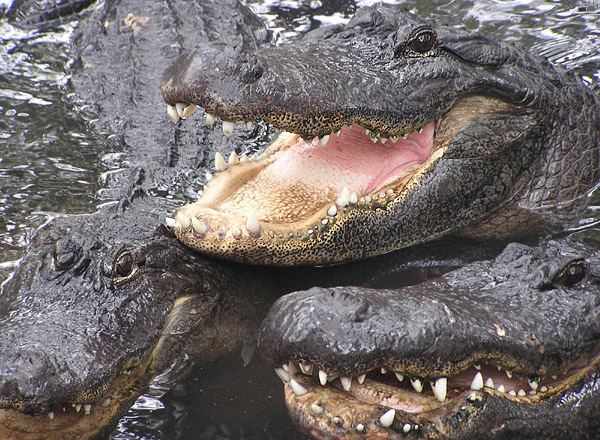
Alligator courtship, Everglades National Park, Florida.Crocodiles part 3: American Alligator (continued)
American alligators are very social, and have many spectacular behaviors, of which bellowing choruses and nighttime dances are probably the most impressive.
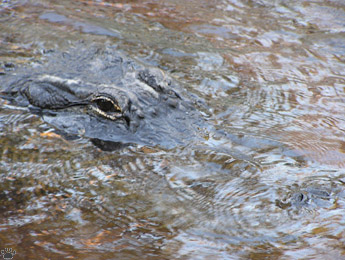
Alligators make a lot of different sounds, not just bellows. This one just made
a loud hiss. Atchafalaya River, Louisiana. |
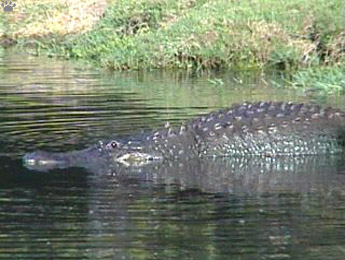
Just before bellowing, alligators often inflate themselves with air.
Dismal Swamp, Virginia. |
 |
Where alligator population density is high, hundreds can be heard bellowing in chorus, mostly in the morning in April-May. |
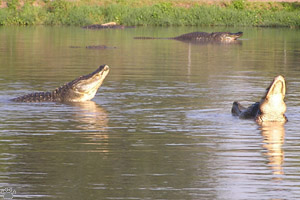 |

Bellowing alligator, ENP, Florida. |
Animals living in isolation also bellow; couples being in love often engage in beautiful bellowing duos. |
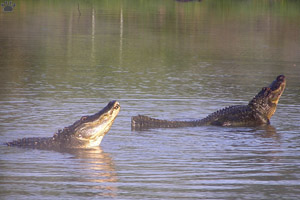
Alligators bellowing in duo, ENP, Florida. |
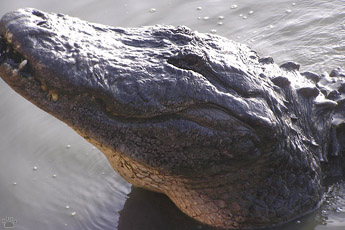
Very old male bellowing, Gatorama, Florida. |
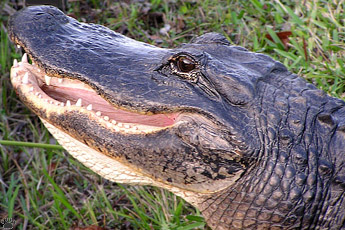
Mid-age female bellowing, Big Thicket National Preserve, Texas. |
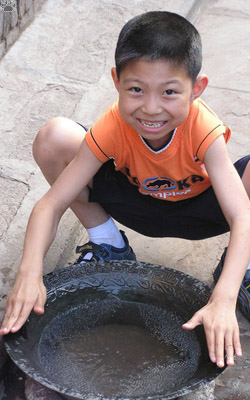
"Magic bowls" like this were very popular in Ancient China.
Rubbing the handles makes the water "dance", probably
by generating infrasound vibrations. Pinyao, China. |
Males alternate bellows with infrasound vibrations. The energy of infrasound is so high that the water above their back begins to "dance", as if boiling intensely. Some males also perform loud head slaps followed by infrasound. Females simply produce a bunch of loud bellows without infrasound.
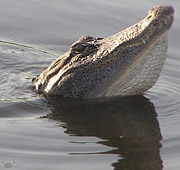 Young female bellowing, ENP, Florida.
Young female bellowing, ENP, Florida. |
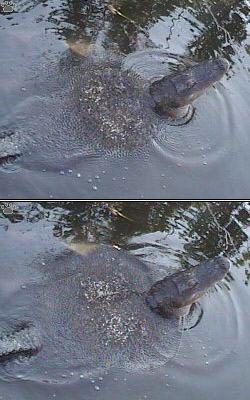
When a bellowing male is viewed from above, it becomes
obvious that the infrasound vibrations are produced by the
sides of its chest. Fakahatchee Strand Nat'l Preserve, Florida. |
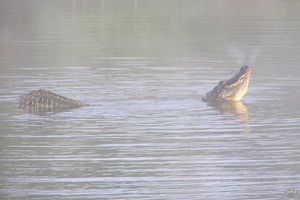
Although alligators are cold-blooded, their breath is sometimes visible
when they bellow on cool foggy morning. ARNWR, N. Carolina. |
Bellowing choruses of dozens of giant reptiles are the most amazing natural spectacle of the American South. |
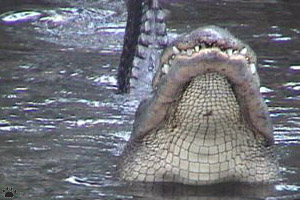
Bellowing of a large male can be heard at a distance of up to a mile on a
quite morning. ARNWR, N. Carolina. |
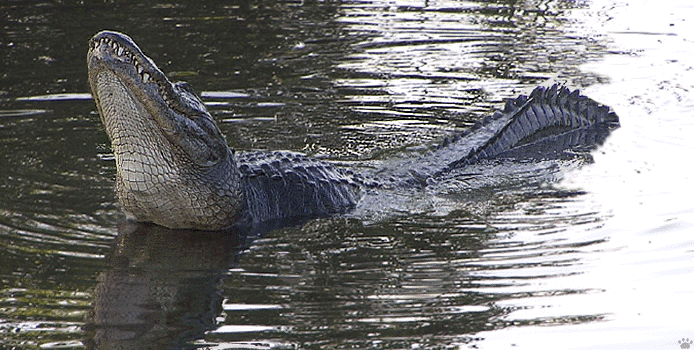
Bellowing alligator, Everglades National Park, Florida. |
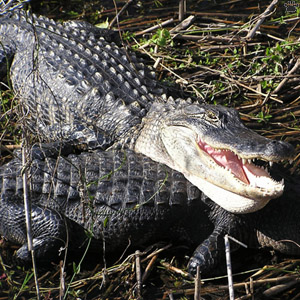
Male alligator bellowing, Fisheating Creek WMA, Florida. |
Alligators can also bellow on land, often while interacting with the opposite sex. I'm trying to find out more about the functions of this poorly understood behavior. |
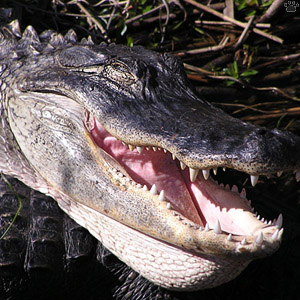
Male alligator bellowing, Fisheating Creek WMA, Florida. |
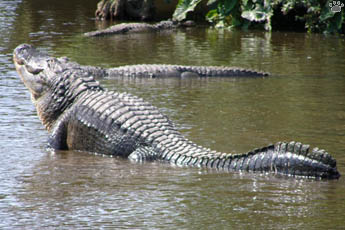
Bellowing alligator, Sawanna National Wildlife Refuge, South Carolina. |
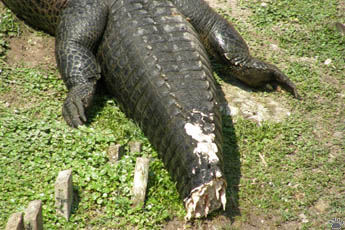
This alligator died after losing its tail in a fight. Gatorland, Florida. |
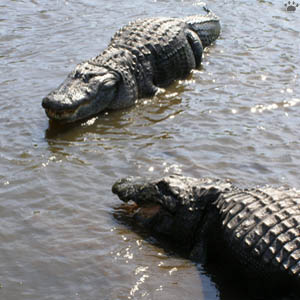
Male alligators in a threatening display,
Merritt Island National Wildlife Refuge, Florida. |
In some areas, male alligator have a second kind of springtime "song" - a loud, powerful headslap followed with infrasound. |
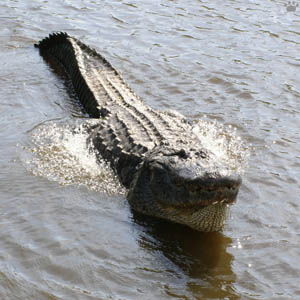
Male alligator in a headslapping display,
MINWR, Florida. |

Alligators in a feeding frenzy, Everglades National Park, Florida. |
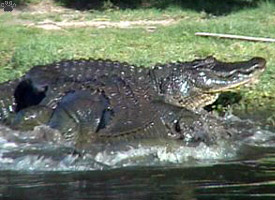 |
Bellowing is not the only social activity of American alligators. When ponds begin to dry out at the end of the dry season, gators would gather for communal fishing, often turning into a feeding frenzy. |
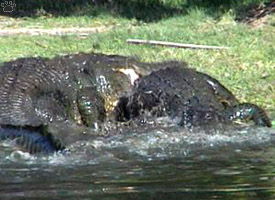 |
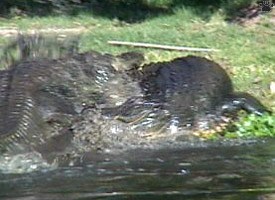
Fighting alligators, ENP, Florida. |
Also in spring, but usually at night and in deep water, dozens of alligators gather for courtship dances. Amazingly, their dances were only discovered in 2006. My paper about the discovery. |
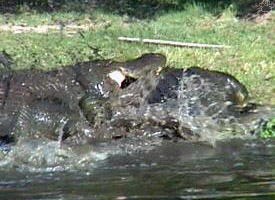
Fighting alligators, ENP, Florida. |

Courtship dance, Everglades National Park, Florida. |
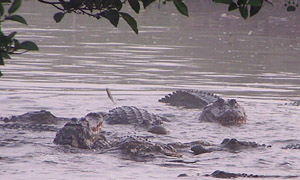
Courtship dance, Everglades National Park, Florida. |
On rare occasions, more than 50 gators might join the dance, but usually there are just 6-20 animals, all adults. |

Courtship dance, Big Cypress National Preserve, Florida. |

Courtship dance, Everglades National Park, Florida. |
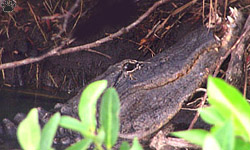
This male lost half of his upper jaw in a fight, and died in
three weeks. ENP, Florida. |
They swim in circles, touch each other, and sometimes fight. Fights can lead to serious, even lethal, injuries, but generally alligators are much less violent and territorial than crocodiles. They are also less dangerous to humans than crocodiles of the same size. |

During the dances, alligators can often be approached
very closely. BCNP, Florida. |
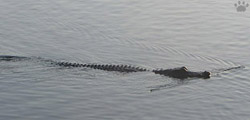
Alligator pushing a branch, ENP. |
Alligators often push little branches or piles of grass with their snouts during dances - that reminds me of chimps using large tree branches in aggressive displays. |
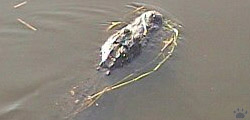
Alligator pushing a bunch of grass, FSNP. |
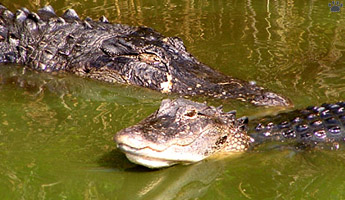 |
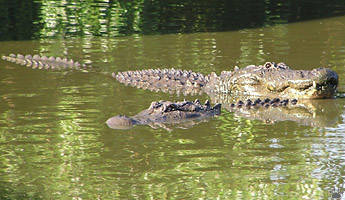 |
| Happy couples, ENP. |
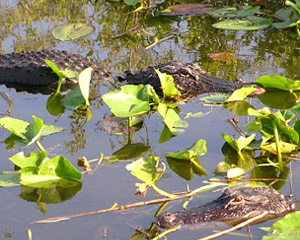
Happy couple, Arthur R. Marshall Loxahatchee NWR. |
After forming pairs, alligators stay near dancing grounds for a while, mating occasionally, and possibly looking for additional sexual partners. |
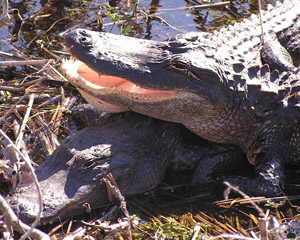
Happy couple, Fisheating Creek WMA. |
 |
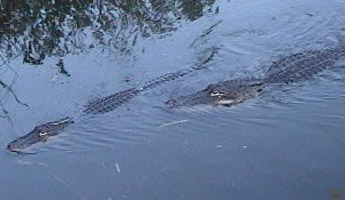 |
| Couples moving to their territories, ARMLNWR. |

Alligators making love, ENP. |
Alligators mate in the water, mostly at night or at dawn. Male is usually on top, and female stays submerged, but other positions can be used. They are tender and passionate lovers, and would remain connected for a long time.
After a few days of dating, pairs move to their territories, where females build their nests and lay eggs. Bellows and courtship are seldom observed outside the mating season, but they may happen at almost any time of the year. I've seen newly hatched babies year-round in southern Florida.
Only in the north of their range do alligators hibernate.
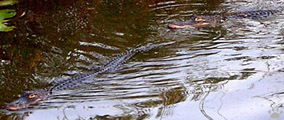
Alligator couple, ENP. |
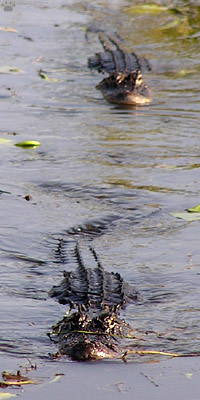
A couple moving to its territory, ENP. |
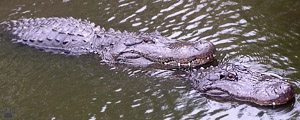
Alligators at the late stage of foreplay, Harris Neck National
Wildlife Refuge, Georgia. |
Alligators are not very faithful to their partners, and adultery is apparently rampant. |

Alligators at the late stage of foreplay, St. Augustine Alligator Farm
Zoological Park, Florida. |
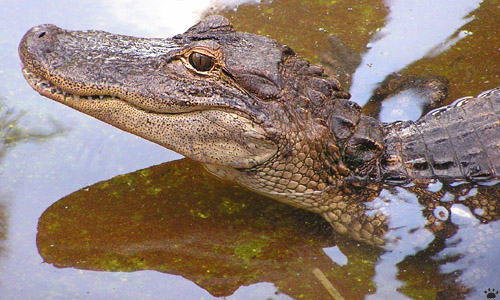
Female alligator in her first mating season, BCNP, Florida. |
Part 4: American Alligator (continued)
Back to Part 2
Home
|